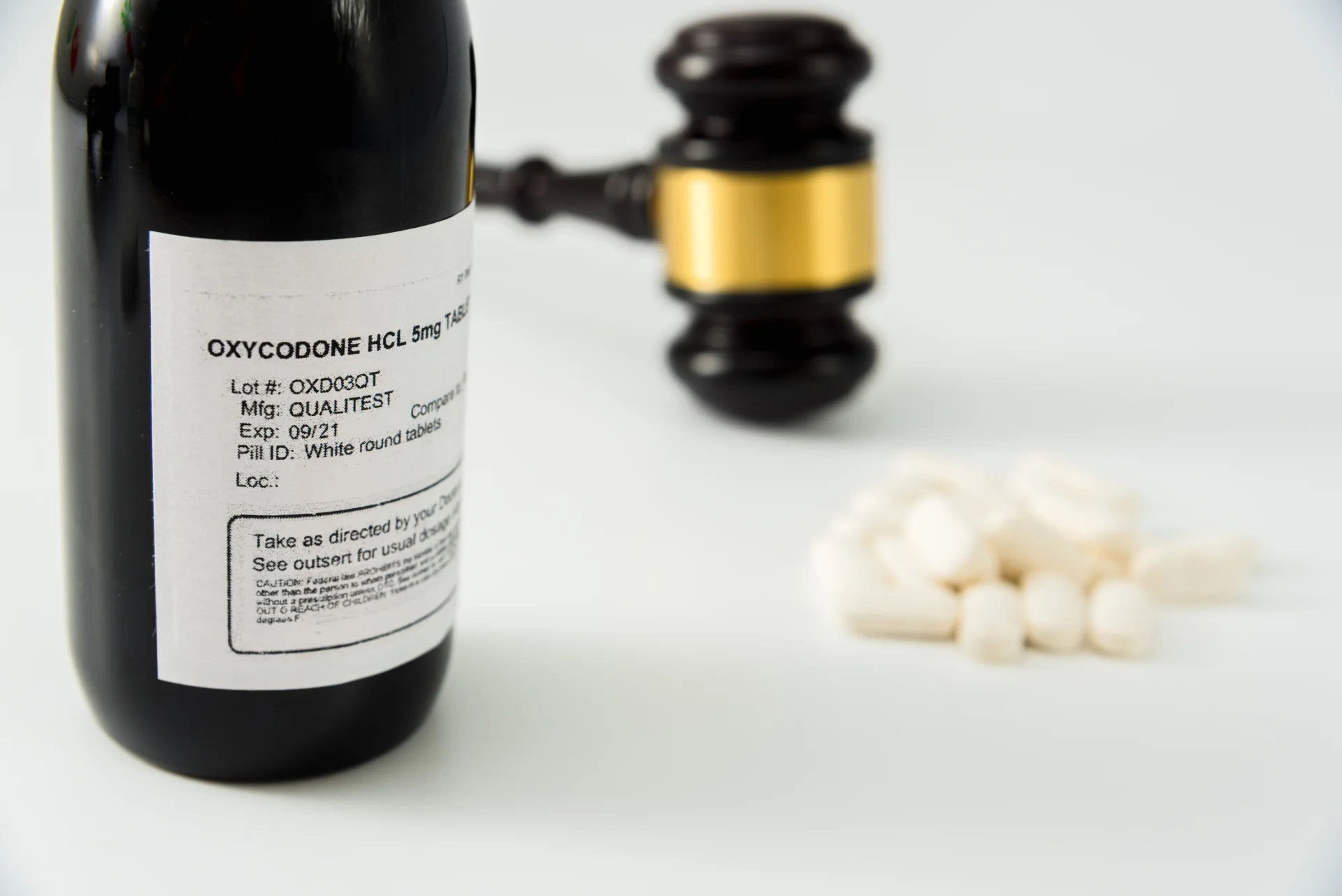OxyContin Addiction Treatment in Long Island
Our Long Island OxyContin guide explains how dependence develops, what withdrawal looks like, and how medications, therapies, and harm-reduction steps support recovery with confidential referrals to safe, personalized treatment.
Covered by most insurance plans
Available to help you 24/7
Table of Contents
OxyContin (oxycodone ER) is a powerful semi-synthetic opioid for severe pain but its high potency and extended-release design make misuse especially risky. On Long Island, we help Nassau and Suffolk residents find licensed, evidence-based care that matches their needs and insurance: medically supervised detox, medication-assisted treatment (MAT), and step-down programs that rebuild life stability not just stop the pills.

Why OxyContin Is So Addictive
OxyContin delivers oxycodone over 12 hours. When crushed, snorted, smoked, or injected to bypass the release mechanism, a large dose hits at once, intensely activating mu-opioid receptors. That surge blocks pain and spikes dopamine (euphoria). With repeated exposure, tolerance (needing more for the same effect) and dependence (withdrawal when levels drop) develop, driving compulsive use even as consequences mount.
Health Risks & Red Flags
Short-term effects: sedation, slow reaction time, pinpoint pupils, constipation, depressed breathing.
Long-term harms: respiratory depression/overdose (especially with alcohol/benzodiazepines), liver injury (with combo products), infections, cardiac and pulmonary complications, and profound mood/sleep disruption.
Misuse signs: taking early or higher doses; doctor-shopping; crushing pills; secrecy; declining school/work performance; money problems; using in risky settings; withdrawal symptoms between doses.
Withdrawal: What It Feels Like & When It Peaks
Onset: ~24–36 hours after last dose (can be sooner if manipulating the pill).
Common symptoms: anxiety, insomnia, aches/cramps, nausea/vomiting/diarrhea, chills/sweats, gooseflesh, runny nose/tearing, dilated pupils, elevated HR/BP, strong cravings.
- Days 1–2: flu-like symptoms surge; cravings intense.
- Days 3–5: physical symptoms begin easing; sleep/mood still rocky.
- Days 5–10: most physical symptoms improve; anxiety/low mood may persist.
- 10+ days: psychological symptoms can linger; without a plan, relapse risk remains high.
Note: Post-acute withdrawal (PAWS) waves of anxiety, insomnia, low motivation can recur for weeks to months and responds to structured care and skills practice.
Detox & MAT on Long Island: What Care Looks Like
Medical detox provides 24/7 monitoring, hydration/nutrition support, targeted meds for GI/autonomic symptoms, and rapid escalation if breathing or blood pressure changes. Many people also benefit from MAT to calm withdrawal and cravings:
- Buprenorphine (often with naloxone): partial agonist that eases symptoms/cravings and blocks overdose-level euphoria.
- Methadone: full agonist used in structured programs for severe/complex dependence.
- Clonidine/lofexidine: reduces autonomic symptoms (sweats, chills, jitters).
- Naltrexone (after detox): antagonist that blocks opioid effects to support abstinence.
Levels of Care Available Locally
- Medical Detox / Inpatient: best for moderate–severe dependence or polysubstance use; 24/7 nursing and MD oversight.
- Residential Rehab: live-in structure, daily therapy, routine building away from triggers.
- PHP / IOP: Partial Hospitalization and Intensive Outpatient provide multi-day therapy each week with medication management while you live at home or in recovery housing.
- Outpatient & Telehealth: weekly therapy + MAT once stable; accessible across Nassau & Suffolk.

Therapies That Protect Recovery
CBT: maps triggers (pain spikes, stress, people/places), challenges “just this once” thoughts, and builds a written relapse-prevention plan with specific if-then steps.
DBT skills: emotion regulation and distress tolerance for urge spikes; interpersonal skills to repair relationships and set boundaries.
Motivational Interviewing: connects change to what matters (health, family, work), keeping momentum after detox.
Dual-diagnosis care: treats depression/anxiety/PTSD/insomnia alongside OxyContin use so symptoms don’t drive relapse.
Pain-without-opioids plan: non-opioid meds, PT, activity pacing, CBT-I for sleep, and mind-body approaches to manage pain safely.
Harm Reduction & Safety
- Avoid mixing opioids with alcohol or benzodiazepines unless tightly coordinated combination raises overdose risk.
- Carry naloxone; teach loved ones how to use it; call 911 for slow or stopped breathing.
- Use one prescriber/one pharmacy; secure medications; never share pills.
- Prioritize hydration, small frequent meals, consistent wake time, and light movement these blunt withdrawal severity.
Aftercare: Keeping Gains After Detox
Successful recovery pairs MAT (buprenorphine or, when appropriate, extended-release naltrexone) with weekly therapy, peer support (SMART Recovery, NA), recovery coaching, family education, and when needed sober living. Your team will help you craft a practical plan covering early-warning signs, coping actions, safe pain strategies, and emergency contacts.
Our Role on Long Island
Long Island Addiction Resources is a confidential local connector not a detox or rehab facility. We verify insurance and match you (or a loved one) with licensed Long Island programs detox, residential, PHP/IOP, outpatient/MAT, and recovery housing experienced in OxyContin tapers, dual-diagnosis care, and relapse-prevention. We can also coordinate professional interventions if treatment readiness is low.
Start Your OxyContin Recovery Journey in Long Island
If you or a loved one are ready to end your alcohol and drug use, there are many recovery options available near you in Long Island
Rehab Programs
Are you ready to take back control over your life?
Making the decision to seek help is one of the hardest and bravest steps you can take. We know that the recovery process is not always easy—there may be challenges along the way—but every step forward brings you closer to a life free from the weight of addiction.
Find treatment options covered by insurance















Let today be
your Day 1
We'll get on a call, assess your health history, and verify your insurance. Today is Day 1. We can't wait to celebrate Day 1000 with you!
Fill out this simple form and we’ll call you right back.
Frequently Asked Questions
We'll get on a call, assess your health history, and verify your insurance. Today is Day 1. We can't wait to celebrate Day 1000 with you!
Can OxyContin cause addiction?
Yes. Even with legitimate medical use, prolonged exposure can lead to tolerance, dependence, and addiction. Misuse accelerates this process.
What are the health risks of OxyContin misuse?
Risks include slowed or stopped breathing, liver injury, constipation, sleep disruption, mood instability, and overdose especially when mixed with alcohol or benzodiazepines.
How long do withdrawal symptoms last?
Acute symptoms peak between 1–5 days and typically subside within a week, though post-acute withdrawal symptoms (PAWS) like low mood, fatigue, and cravings can last for weeks or months.
What levels of care are available for OxyContin treatment on Long Island?
Options include medical detox, residential rehab, partial hospitalization (PHP), intensive outpatient programs (IOP), outpatient therapy, and telehealth services.
What harm reduction practices can improve safety?
Avoid mixing opioids with alcohol or sedatives, carry naloxone (Narcan), secure medications properly, stay hydrated, eat well, and maintain consistent sleep and exercise routines.
